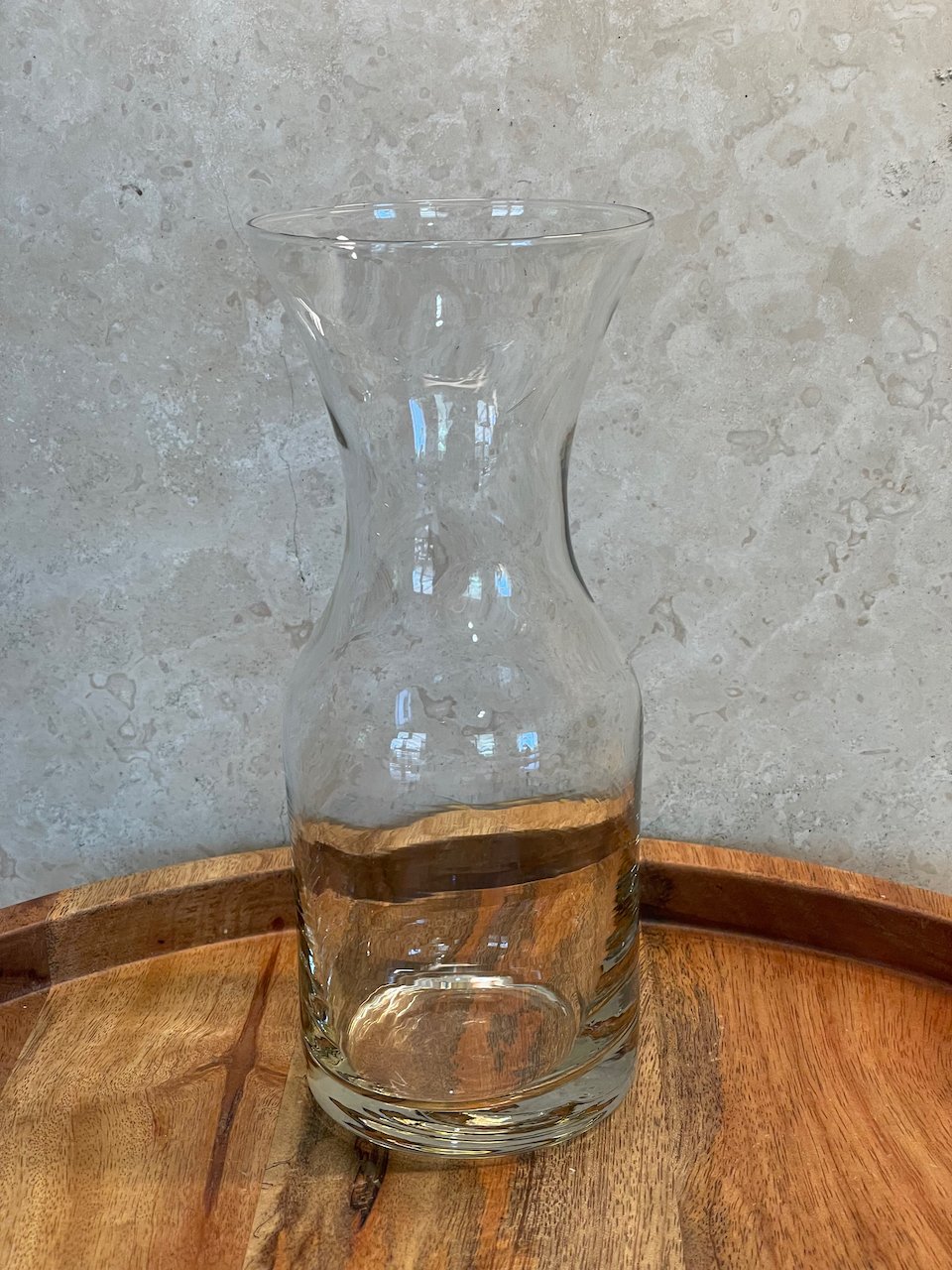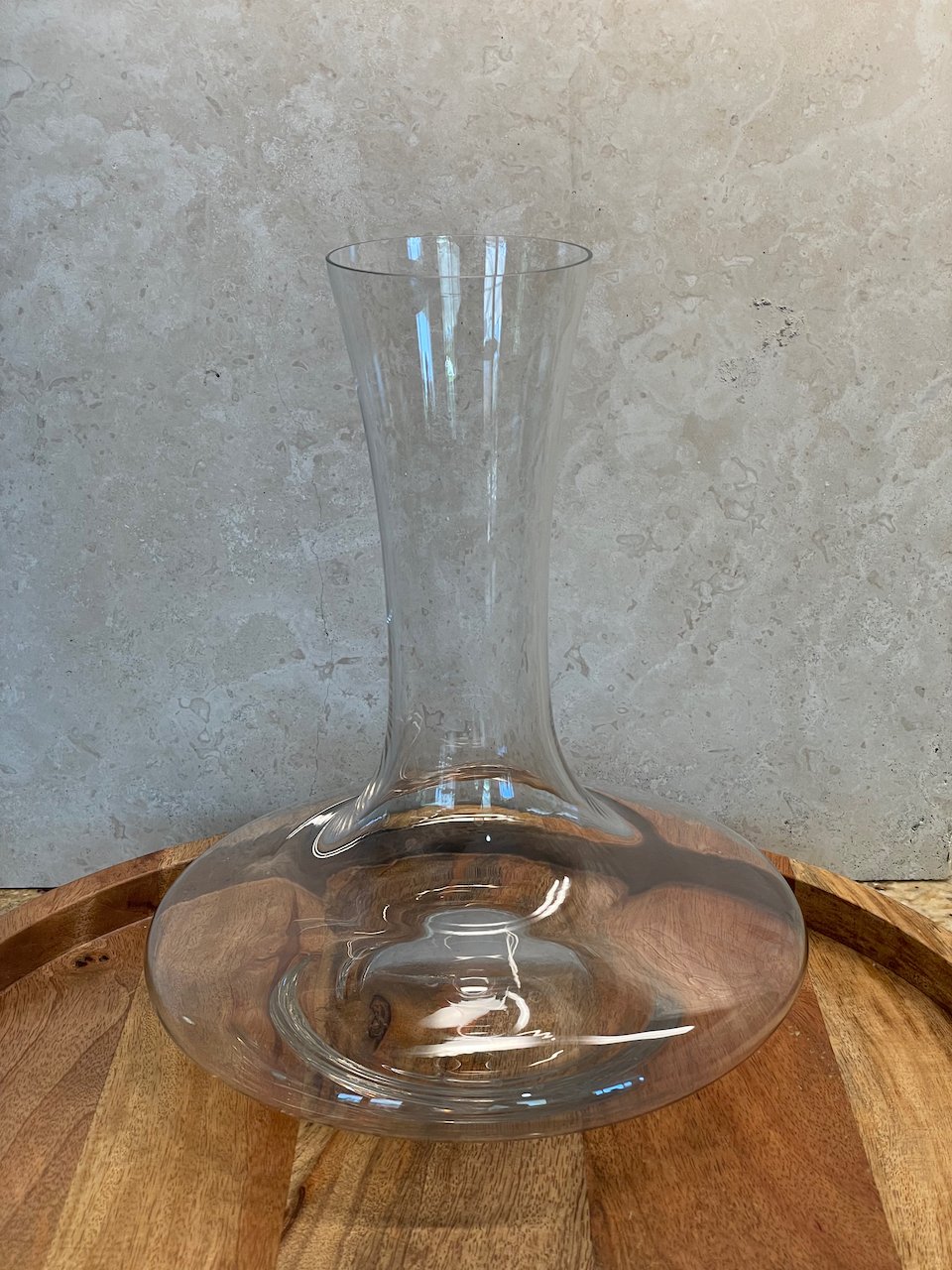A decanter is a great vessel to allow a wine to breathe. And, really any container will help a wine breathe. But, all too often, the decanter ends up looking like the one pictured here. This is a beautiful carafe and it's a great addition to a bar or table for serving wine. Unfortunately, it's a bit too narrow. It doesn't give the wine enough room to truly breathe. But, compared to leaving the wine cooped-up in an un-corked bottle, this type of decanter is a definite improvement. Not only does it give the wine a bit more space, it also allows the wine to catch a bit of a breath as it's being poured from the bottle to the decanter.
But to really give a bottle of wine a chance to breathe, you'll need some type of decanter that allows the wine to spread out and have a lot of surface area in contact with air. The wide-base decanter pictured here is a great example. And, it's designed such that a single bottle of wine just fills the bottom and allows for the maximum amount of the wine's surface area to be exposed to air.
So, next time you open a bottle of wine and think it needs some time to breathe, pour it into a decanter, or really any vessel, that provides a large surface area for the wine to be in contact with air. And, after an hour or two, the wine should smooth out and be more enjoyable. Cheers!



